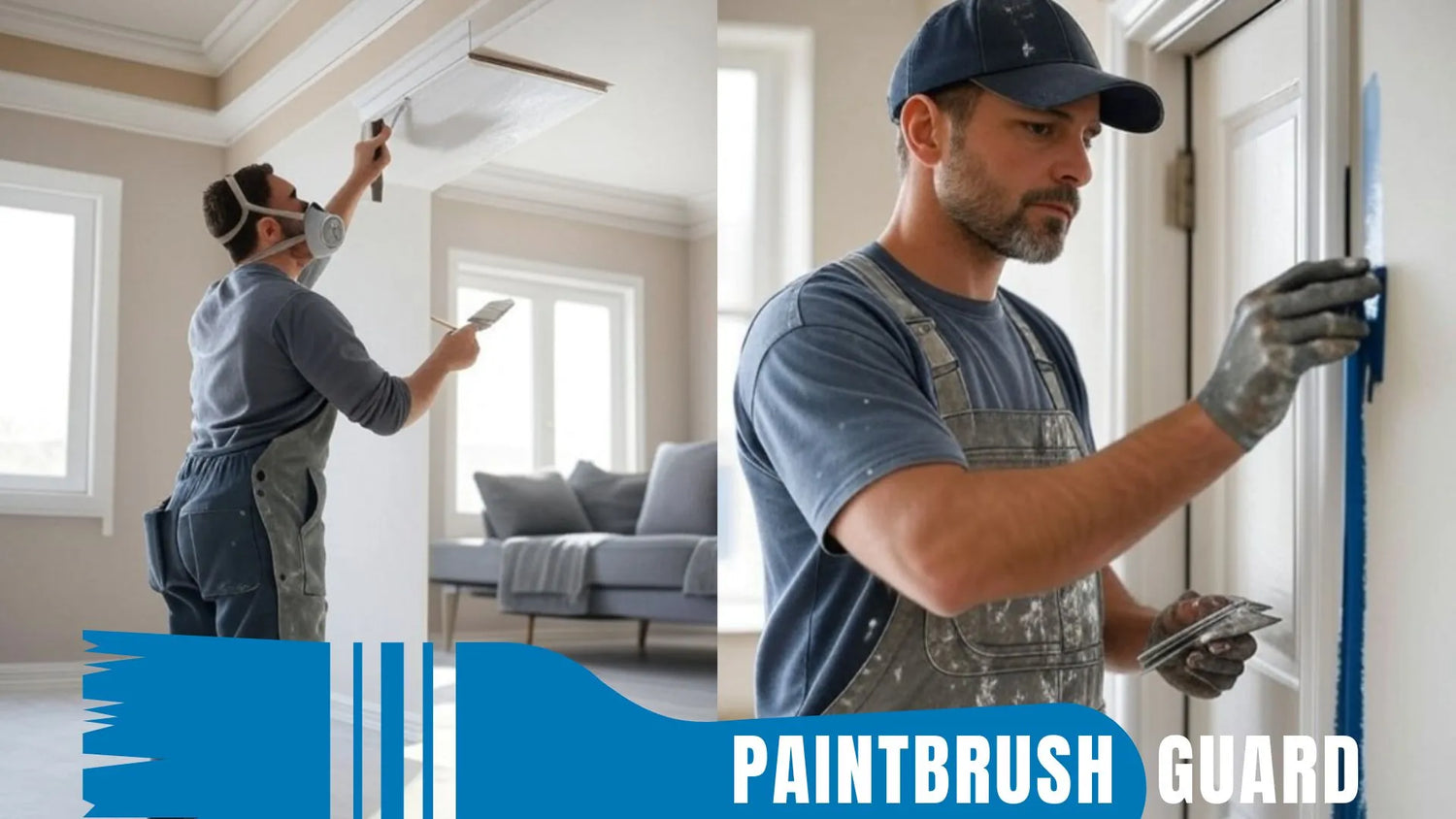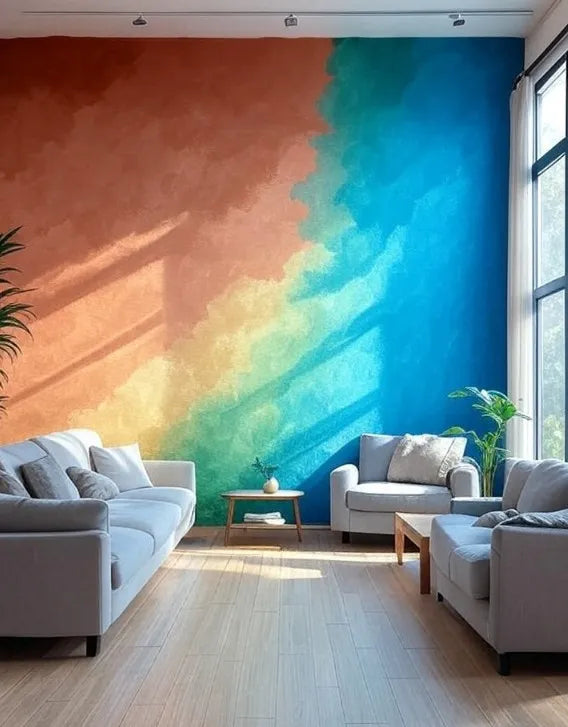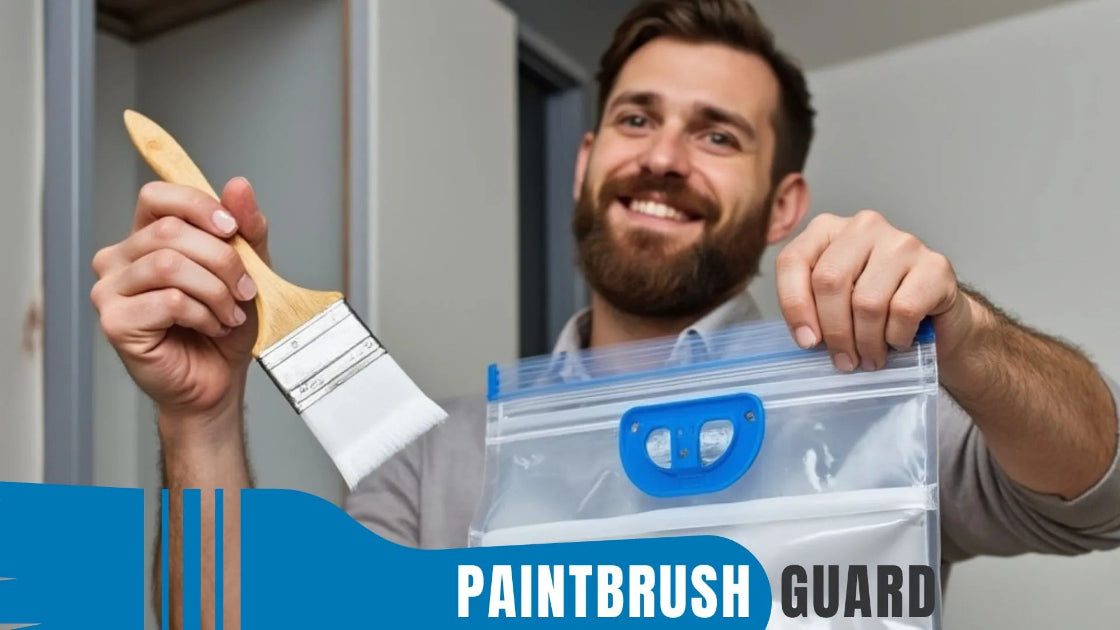
Sustainable Painting Tools: How Paintbrush Vacuum Storage Beats Traditional Methods
|
Time to read 6 min
|
Time to read 6 min
Every year, over 750 million gallons of paint go unused in the United States alone, contributing to environmental strain through improper disposal and resource depletion.
As eco-conscious consumers demand sustainable painting tools, the industry is shifting toward innovative solutions that minimize harm without compromising results.
Enter vacuum storage for paint, a game-changer in eco-friendly painting supplies. This technology seals paints and brushes in airtight pouches, preventing drying, evaporation, and contamination.
Unlike traditional paint storage methods that rely on lids, wraps, or frequent cleanings, vacuum storage extends usability dramatically while slashing waste. Imagine pausing a project mid-stroke and picking it up weeks later, brush pristine and paint fresh.
This article explores why vacuum storage outperforms outdated approaches, backed by real data and practical insights.
We'll dive into the pitfalls of conventional tools, unpack the mechanics of vacuum sealing, and highlight its transformative benefits for paint waste reduction.
Whether you're a weekend warrior refreshing your living room or a professional artist tackling commissions, adopting these sustainable painting tools can save time, money, and the planet.
By the end, you'll see how benefits of vacuum storage for sustainable painting make it an essential upgrade.
With no cleanup required after a painting session, you can take a short break mid-project or wrap up your painting for the day, your brush stays ready without the need to clean.
Traditional painting tools, while effective for getting the job done, carry a heavy ecological footprint. From production to disposal, they contribute to pollution, resource overuse, and landfill overload.
The painting industry, a multi-billion-dollar sector, generates significant waste, much of it avoidable with smarter alternatives like sustainable painting tools.
Consider the sheer volume: architectural paints alone see about 10% left unused after purchase, equating to those 750 million gallons annually in the U.S.
This excess doesn't just sit idle; it often ends up as household hazardous waste (HHW), where paint residues account for nearly 50% of collected materials in some regions.
Globally, the push for paint waste reduction is urgent, as unrecycled paints release volatile organic compounds (VOCs) that harm air quality and contribute to climate change.
Exposure to air causes paints to dry and harden, rendering them unusable within days.
Runoff from improper disposal contaminates soil and waterways, affecting aquatic life with toxic residues.
For brushes, repeated cleanings flush preservatives and biocides into drains, straining wastewater systems and septic tanks.
Here are 4 key problems with traditional paint storage methods:
Shifting to eco-friendly painting supplies isn't just trendy, it's essential for a greener future.
As we'll see, vacuum storage tackles these issues head-on.
Save time with Paintbrush Guard vacuum storage: Transforms your painting experience by eliminating the time-consuming task of cleaning brushes, offering a fast, efficient solution for both DIY painters and professionals.
Vacuum storage is a simple yet powerful technology that removes air from sealed pouches, creating an oxygen-free environment ideal for preserving wet paints and tools.
At its core, it's like a mini vacuum sealer adapted for art and house painting, preventing oxidation and bacterial growth that cause drying and spoilage.
This makes it a cornerstone of sustainable painting tools, extending the life of materials without harsh preservatives.
Unlike clunky traditional paint storage methods, vacuum systems use reusable bags or rolls made from durable, food-grade plastics.
Specialized options like Paintbrush Guard target brushes directly. The result? Vacuum storage for paint keeps acrylics, oils, and latex fresh for months, aligning perfectly with paint waste reduction goals.
This process cuts setup time dramatically compared to wrapping or refrigerating open cans.
Find the 7 best green paint colors for your interior walls with our top picks. Learn about paint finnish, the natural vibe and rooms to apply for perfection.
Why choose vacuum storage? It outperforms traditional paint storage methods across efficiency, economy, and ecology, making it indispensable for sustainable painting tools.
Let's break down the benefits of vacuum storage for sustainable painting, drawing from real-world tech like Paintbrush Guard's system.
First, consider shelf life: Traditional methods might keep paint usable for days, but vacuum sealing extends it up to 5x, over 6 months for brushes and paints without hardening. No more tossing dried-out tubes mid-project.
Zero evaporation means no VOC loss or air exposure, directly aiding paint waste reduction. Reusable pouches replace single-use wraps, slashing plastic use.
Traditional cleaning? A 15-minute ordeal with soaps and rinses. Vacuum? Wipe, bag, seal in seconds, sans mess. This effortless design suits quick touch-ups or extended breaks.
Environmentally, it's a win: Cleaning brushes traditionally guzzles 5-10 gallons of water per session, wasting millions globally monthly and flushing chemicals into drains. Vacuum storage eliminates this, curbing chemical runoff and pollution.
Brushes last longer too with skipping cleanings prevents bristle wear, reducing replacements.
Cost-wise, savings stack up: Less wasted paint, fewer new brushes, and no pricey cleaners add up fast. One user shared, "As a mural artist, Paintbrush Guard saved me $200 yearly on supplies, plus, my studio stays toxin-free!" Hypothetical case: A DIYer painting a home over weekends avoids $50 in discarded paint per project.
Aspect |
Traditional Methods |
Vacuum Storage |
Shelf Life |
Days to weeks; frequent drying out |
Up to 6+ months; no hardening |
Waste Reduction |
High (10% unused paint) |
Minimal; reusable pouches cut plastic |
Cost Savings |
Ongoing (cleaners, replacements) |
Upfront low; long-term $100s saved |
Eco-Footprint |
Water/chemical waste; VOC emissions |
Zero runoff; extended tool life |
These perks make vacuum storage for paint a no-brainer for eco-friendly painting supplies. Versatile for pros and hobbyists, it fosters paint waste reduction without compromise.
Discover how house paint colors influence mood & get expert tips on choosing the best colors for every room to create a vibrant, harmonious home environment.
Vacuum storage isn't theoretical, it's transforming daily workflows for sustainable painting tools users. From home refreshes to studio marathons, it fits seamlessly, promoting eco-friendly painting supplies in action.
Artists love it for uninterrupted flow: Seal mid-layer, return fresh. DIYers use it for phased renos, avoiding rushed cleanups.
Real users report 30% less waste, proving benefits of vacuum storage for sustainable painting in practice.
Selecting vacuum storage elevates your sustainable painting tools arsenal. Focus on durable, low-impact features to maximize eco-friendly painting supplies.
Top features to seek:
Recommendations:
Prioritize certified green brands for true sustainability.
Learn more about Paintbrush Guard: This guide tackles the top 20 questions about storing paintbrushes, from quick breaks to long-term care, and even challenges like humid coastal areas.
Vacuum storage redefines sustainable painting tools, outshining traditional paint storage methods with longer life, less waste, and eco-gains.
From slashing 750 million gallons of unused paint to eliminating chemical runoff, its benefits of vacuum storage for sustainable painting are undeniable—saving water, time, and cash while protecting our planet.
Ready to green your toolkit? Try paintbrush vacuum storage today. Share your eco-hacks in comments; let's build a waste-free creative community!
Up to 6+ months, depending on type, far beyond traditional days.
Yes, for acrylics, oils, and latex; avoid high-solvent types without testing.
5-10 gallons per session, millions monthly worldwide.
Absolutely—saves on replacements and waste, up to $200/year for pros.
Contributes to 50% of HHW; vacuum helps divert it.
paintbrushguard.com for specialized kits.

Learn about eco-friendly painting, tips and tutorials on house interior and exterior surfaces, so you can get started with your project without any surprices during or after your painting.

Learn how interior house paint colors influence mood with expert tips on room preference so you can pick the best colors for a harmonious home environment.
We focus on the most popular shades for each interior colors, so you don't miss no matter what color you pick.

Learn how this innovative tool allows you to store paintbrushes without the need for immediate cleaning, offering significant advantages in time savings, water conservation, reduced chemical pollution, and lower costs for supplies.

